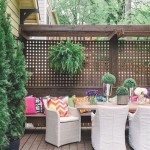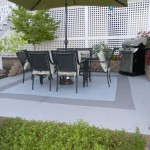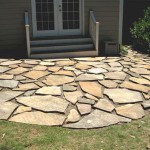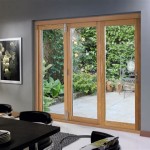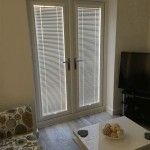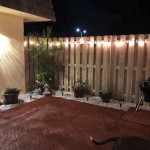Patio Roof Styles: Exploring Your Options
A patio can significantly enhance outdoor living space, offering a comfortable area for relaxation, dining, and entertaining. However, exposure to the elements can limit its usability. A patio roof provides protection from sun, rain, and wind, extending the time spent enjoying the outdoors and protecting patio furniture. Choosing the right patio roof style is crucial, as it impacts aesthetics, functionality, and overall property value. This article explores various patio roof styles, providing information to make an informed decision.
Before delving into specific styles, it is important to consider several factors. These include the existing architectural style of the house, budget constraints, desired level of sun exposure, local building codes, and the intended use of the patio. Answering these questions will help narrow down the options and ensure the selected roof style complements the home and meets specific needs.
Understanding Key Considerations Before Choosing
Selecting the appropriate patio roof requires careful deliberation of several key factors. Ignoring these considerations can lead to dissatisfaction with the final result, potential code violations, or even structural issues down the line.
Firstly, the architectural style of the house should be a primary driver. A contemporary home will benefit from a sleeker, more modern roof design, while a traditional home might pair better with a more classic aesthetic. Mismatched styles can detract from the overall curb appeal. Consider the roofline, siding materials, and overall design language of the existing structure to ensure the patio roof blends seamlessly.
Secondly, budget constraints play a significant role. Different roofing materials and structural designs have varying costs. A complex, custom-built roof will naturally be more expensive than a simple, prefabricated option. It's crucial to establish a realistic budget and explore options within that range, keeping in mind that cheaper options may compromise on durability or aesthetics. Obtain multiple quotes from reputable contractors to get a clear understanding of material and labor costs.
Thirdly, the desired level of sun exposure needs to be considered. Some homeowners prefer full shade, while others prefer a balance of sun and shade. The material chosen for the roof will significantly impact the amount of sunlight that penetrates the space. Solid roofs provide complete shade, while open lattice or translucent materials allow varying degrees of light to filter through. The orientation of the patio relative to the sun's path is also a crucial factor to consider.
Fourthly, local building codes and permit requirements must be adhered to. Building codes vary by region and dictate specific requirements for structural integrity, materials used, and installation methods. Failing to comply with these codes can result in fines, delays, or even the need to dismantle the structure. Contact the local building department to understand the necessary permits and regulations before beginning any construction.
Finally, the intended use of the patio will influence the ideal roof style. If the patio is primarily used for dining, a roof that provides complete protection from the elements is desirable. If the patio is mainly used for relaxation and sunbathing, a more open design that allows for some sun exposure might be preferred. Consider how the patio will be used throughout the year and choose a roof style that accommodates those needs.
Exploring Different Patio Roof Styles
Numerous patio roof styles exist, each offering unique benefits and aesthetic qualities. Common styles include solid roofs, lattice roofs, pergola roofs, retractable awnings, and shade sails.
Solid roofs offer complete protection from rain and sun. They are typically constructed from materials like aluminum, wood, or composite roofing shingles. Solid roofs are ideal for homeowners seeking a fully sheltered space and can be enhanced with features such as gutters and downspouts to manage water runoff. They also provide excellent insulation, helping to keep the patio cooler in the summer and warmer in the winter. However, solid roofs can block natural light and may require additional lighting fixtures for nighttime use.
Lattice roofs, also known as open-roof patios, provide partial shade and allow for airflow. They consist of interwoven strips of wood, metal, or composite materials, creating a decorative pattern that filters sunlight. Lattice roofs offer a balance between sun and shade, making them suitable for homeowners who enjoy some sun exposure. They also allow for climbing plants to grow, adding a touch of greenery and natural beauty to the patio space. However, lattice roofs offer limited protection from rain and may not be suitable for areas with frequent rainfall.
Pergola roofs consist of a framework of posts and beams, typically made of wood or metal. Pergolas can be left open or covered with climbing plants, fabric, or other materials to provide shade. They offer a degree of flexibility in terms of design and functionality, allowing homeowners to customize the level of sun and shade. Pergolas can be built as freestanding structures or attached to the house. They add architectural interest to the patio and provide a visually appealing focal point. However, the level of protection from the elements depends on the chosen covering material.
Retractable awnings offer a flexible solution for controlling sun exposure. These awnings can be extended to provide shade and retracted to allow for sunlight. They are typically made of fabric or vinyl and are available in various colors and patterns. Retractable awnings can be manually operated or motorized for convenience. They are a good option for homeowners who want the ability to adjust the level of shade based on the weather conditions. However, retractable awnings may not be as durable as permanent roof structures and may require maintenance or replacement over time.
Shade sails are fabric canopies that are suspended between multiple points, creating a shaded area. They are available in various shapes, sizes, and colors, offering a modern and stylish aesthetic. Shade sails are relatively inexpensive and easy to install, making them a popular choice for homeowners on a budget. They provide protection from the sun but offer limited protection from rain. Shade sails are a good option for creating a temporary or seasonal shaded area.
Material Selection and Maintenance
The choice of roofing material is crucial for durability, aesthetics, and maintenance. Common materials include wood, aluminum, composite, and fabric.
Wood offers a natural and aesthetically pleasing look. It can be stained or painted to match the house and provides a warm and inviting atmosphere. However, wood requires regular maintenance, including painting, staining, and sealing, to prevent rot and insect damage. Cedar and redwood are naturally resistant to decay and insects, making them good choices for wood patio roofs.
Aluminum is a lightweight and durable material that is resistant to rust and corrosion. It requires minimal maintenance and can be powder-coated in various colors to match the house. Aluminum roofs are a good option for homeowners seeking a low-maintenance and long-lasting solution. However, aluminum can be more expensive than wood and may not offer the same natural aesthetic.
Composite materials are made from a combination of wood fibers and plastic, offering the look and feel of wood with enhanced durability and resistance to rot and insects. Composite roofing requires minimal maintenance and is available in various colors and textures. It is a good option for homeowners who want the aesthetic appeal of wood without the associated maintenance requirements. However, composite materials can be more expensive than wood and may not be as environmentally friendly.
Fabric is commonly used for retractable awnings and shade sails. It is available in various colors, patterns, and materials, offering a wide range of aesthetic options. Fabric roofs are relatively inexpensive and easy to install. However, fabric is less durable than other roofing materials and may require replacement over time. It also requires regular cleaning to prevent mildew and staining.
Regular maintenance is essential to prolong the life of the patio roof. This includes cleaning the roof regularly to remove dirt, leaves, and debris. Inspecting the roof for damage, such as cracks, leaks, or loose fasteners, and making repairs as needed is also necessary. Applying a protective sealant or coating to the roof can help prevent damage from the elements. For wood roofs, regular painting or staining is required to prevent rot and insect damage. Properly maintaining the patio roof will ensure its longevity and continued protection from the elements.

26 Patio Shade Ideas To Help You Stay Cool Timbertech

23 Patio Cover Ideas That Make Outdoor Living A Breeze Architectural Digest

57 Stunning Patio Roof Ideas To Transform Your Outdoor Space Covered Design Backyard

5 Roof Options For Patio Natural Light Sydney Best Builder Carport Decking Sunroom

4 Types Of Patio Covers To Keep You Cool

Pergola Archives Hhi Patio Covers

Gable Roofs Dallas Houston Tcp Custom Outdoor Living

Renaissance Patio Outdoor Coverings Patios Pergolas

Outdoor Covered Patio Ideas On A Budget 7 Best Options For 2024

Patio Roofing Roofs For Patios Renaissance
Related Posts

